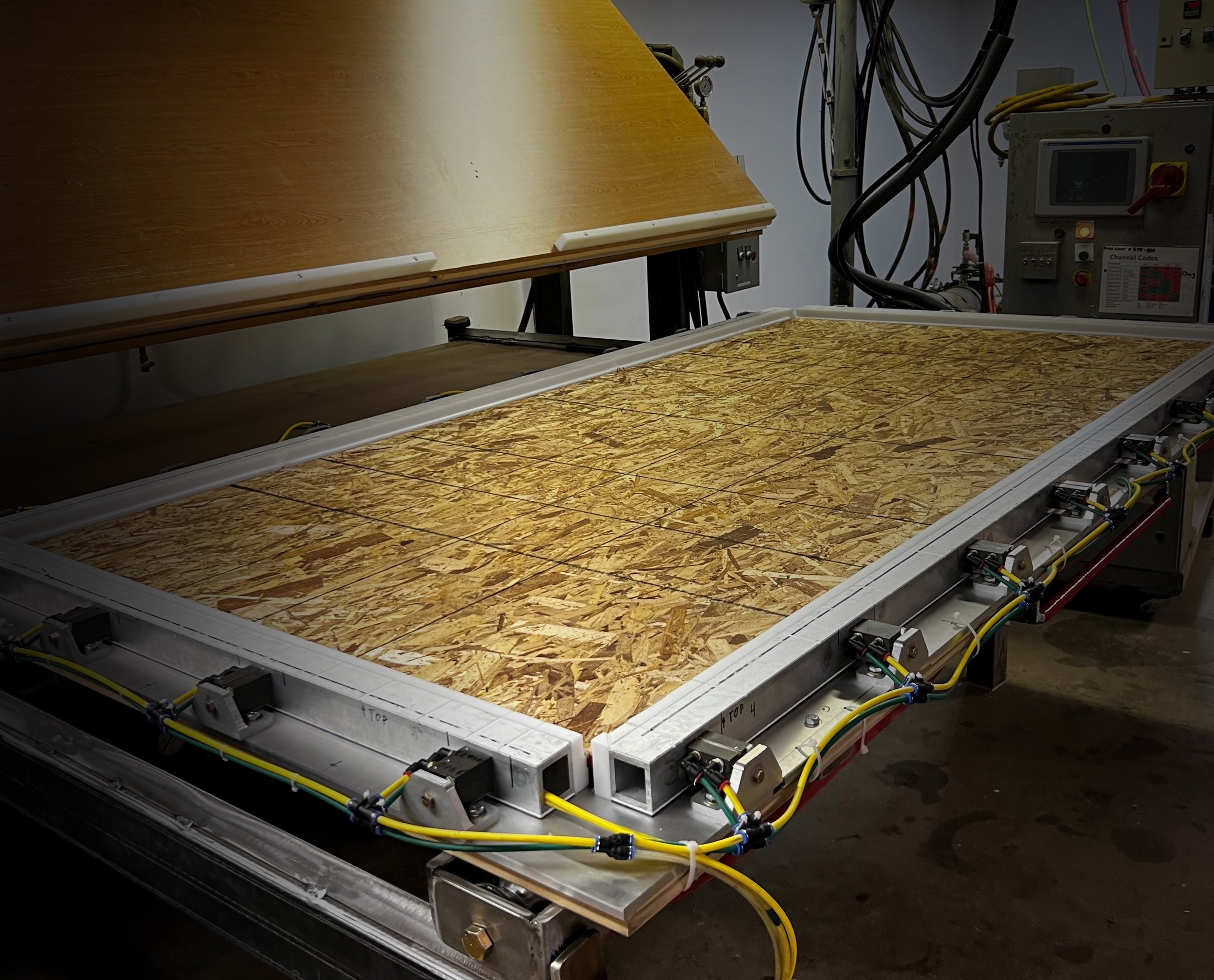
Product innovations to build homes in a better way.
Reduced heat and cooling loads mean smaller systems
Example: Lowering A/C needs can save approximately $300 per ½ ton of cooling
This number increases by approximately double for ASHP (air source heat pump) cooling loads.
The table below outlines the National Building Code (NBC) current prescriptive requirements for achieving the minimum wall assembly insulation values across Canada. In Row 3, you’ll find the required RSI values, which represent the total effective insulation of the assembly.
With a standard 2x6 wall using R-19 fiberglass batt and 16” o/c stud spacing paired with BTRboard™, you not only meet the requirements in every climate zone but also eliminate the need for thicker insulation, double-wall construction, or complex designs. This provides significant cost savings in both design and implementation while ensuring top-tier insulation performance.
Moreover, if you desire even higher insulation values, you can easily upgrade the cavity insulation from R-19 to R-24 without introducing any additional design, engineering, or construction complexities. This flexibility allows builders to optimize performance and value without sacrificing simplicity and at a much lower cost than typical complex energy efficient walls.
BTRboard FireX: The Only Fire-Rated Vinyl Cladding Insulated Panel for Zero Lot Line Homes
BTRboard FireX is the only 45-minute fire-rated insulated panel that supports vinyl cladding, specifically designed for zero-lot line homes and buildings in close proximity. This innovative solution combines fire protection and aesthetic flexibility without the need for costly steel studs or mineral glass insulation.
Key Features:
• 45-Minute Fire Rating: Meets stringent fire safety requirements for tight spaces.
• Vinyl Cladding Compatibility: Exclusive ability to use vinyl cladding over a firerated assembly.
• No Steel Studs or Mineral Glass: Saves on materials and labor costs.
• Ideal for Zero Lot Line Homes: Perfect for multi-family units and close-quarter developments.
Benefits:
• Cost-Effective: Reduces material and installation expenses.
• Efficient Installation: Simplified design for faster, easier setup.
• Design Flexibility: Oers a visually appealing, code-compliant solution with vinyl cladding.
BTRboard FireX – the ideal choice for safe, cost-eicient, and visually flexible fire-rated walls for zero-lot line homes.
Regarding the next chart below, as Canada moves towards Net Zero Ready homes, the challenge lies in finding cost-effective, buildable, and design-friendly solutions to meet these evolving standards without inflating construction costs. The table below outlines the National Building Code (NBC) performance metrics that guide us through a set of five tiers, gradually increasing the insulation and energy performance requirements for homes.
The two key metrics driving these changes are:
Overall percentage of improvement: Starting from Tier 1 with no required improvement, advancing through 10% in Tier 2, 20% in Tier 3, 40% in Tier 4, and ultimately 70% improvement in Tier 5.
Building enclosure performance: As we progress, the focus shifts towards improving the building envelope’s insulation values.
For example, in a city like Calgary or Regina, current requirements call for an RSI effective value of 2.97 (with HRV).
To meet Tier 5, we need to be 40% better than this benchmark. Fortunately, BTRboard™ offers a 38% improvement in insulation performance with a standard 2x6 wall and R-19 fiberglass batt. By simply upgrading to an R-24 fiberglass batt, using BTRboard™ with 24” o/c stud spacing, the RSI value jumps to 4.27, an improvement of 44% over today’s standards.
This approach is as simple and effective as it gets—no need for complex designs or added engineering. And with BTRboard’s commitment to continuous innovation in foam and assembly development, by the time we reach Tier 5, we expect to see even more advanced solutions that help builders achieve higher performance without extra costs or construction challenges.
-

Application with window frames
Install windows the same as on standard 2X6 walls
Shim windows across rough sill to BTRboard OSB panels
-

Cladding and Water Resistant Barriers (WRB)
BTRboard seamlessly allows builders to Install cladding and WRB the same as on standard 2X6 walls.
-
BTRboard nailing system
BTRboard 3 1/2" pneumatic nailer makes installations a breeze when used with our product systems.





